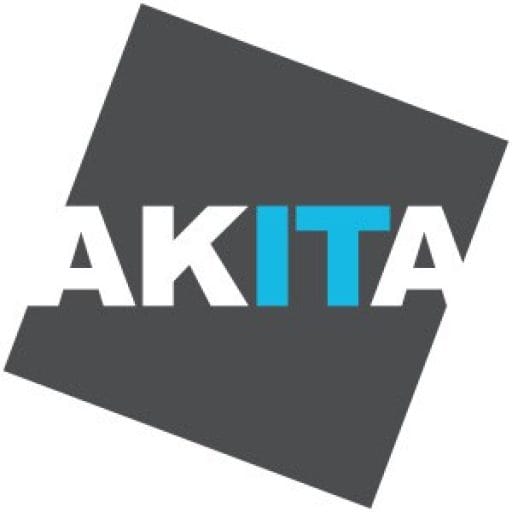Architecture is an industry built on accuracy, innovation and the seamless flow of information. Yet many practices still battle ageing IT infrastructure, sluggish design systems and fragmented workflows that drain productivity.
Firms looking to win larger tenders, accelerate delivery and strengthen client confidence need a modern technology foundation that aligns with the realities of architectural work.
Strategic IT support for architects is no longer a background function: it’s a growth catalyst. When your technology, processes and support model reflect how architects collaborate and deliver, you unlock efficiency, protect margins and improve design output across the practice.
Why Architecture Firms Need a Different Class of IT Support
Architectural work demands high performance, stable collaboration, robust compliance and strong cyber resilience. These requirements separate the architecture sector from standard office environments and place very specific demands on IT infrastructure.
Architects work with intensive CAD, BIM and 3D visualisation applications that require powerful processing capability and fast access to large models. Any slowdown creates operational friction, delays approvals and frustrates design teams.
At the same time, models must be consistently accessible across dispersed teams, external consultants and planning bodies. Smooth collaboration hinges on reliable communication tools, organised data structures and consistent software versions.
Alongside this is a growing regulatory burden on data governance, file management and privacy. Planning processes, contractor agreements and client confidentiality all require detailed audit trails and stringent access control.
These realities mean architectural practices need a support partner that understands the design cycle end-to-end and can optimise the technology that underpins it.
Getting Tailored IT Support For Architects
A specialist IT partner can transform workflows by aligning performance, collaboration and governance.
This includes tuning infrastructure for design applications, standardising tools across teams and ensuring robust cyber protection without slowing creativity or delivery.
Building a High-Performance, Collaborative Design Environment
Growth in architecture comes from consistent delivery, predictable workflows and the ability to take on larger, more complex projects. This is only possible when the technology environment supports clear communication, responsive systems and strong project governance.
Modernising the hardware estate is central to this. Architect workstations must match the intensity of BIM and visualisation workloads, with dedicated graphics capability, fast local storage and structured refresh cycles that keep performance reliable. Complementing this with cloud-ready infrastructure allows firms to scale capacity on demand, with design environments accessible securely from studio or remote locations.
Standardising software across the practice ensures accurate model sharing, reduces version conflicts and strengthens coordination between project teams and external partners. Integrated communication tools — such as cloud-based whiteboarding, meeting platforms and structured shared workspaces — streamline internal reviews and support quicker client decision-making.
Data management also plays a decisive role in creating predictable workflows. Centralised storage, whether cloud-hosted or high-performance onsite infrastructure, ensures fast access to models and prevents file duplication.
Automated backup and restoration processes protect against accidental deletion or file corruption — a critical safeguard when working to tight planning timelines. With structured permission control and detailed version histories, firms gain reliable project governance and clearer oversight of who has accessed or modified project files.
Strengthening Security Across the Practice
Architectural firms are high-value cyber targets. They hold sensitive planning information, detailed property data, commercial models and intellectual property that can be exploited by cyber criminals. Strong security is therefore a commercial necessity rather than a technical formality.
Advanced threat detection and response systems monitor the environment in real time, identifying suspect activity quickly and isolating compromised endpoints before they disrupt delivery. Secure remote access frameworks support hybrid working without exposing design systems to unnecessary risk.
Network segmentation further reduces exposure by separating critical design environments from general office systems.
Human error remains one of the most common causes of breach. Regular cyber awareness training equips architects, technicians and project teams with confidence to spot phishing attempts, risky links and unsafe file-sharing practices. This cultivates a security-conscious culture that supports the wider cyber strategy.
Developing A Scalable IT Strategy For Long-Term Growth
The future of architecture is increasingly digital, shaped by AI-assisted modelling, VR/AR visualisation, digital twins, reality capture and automation across the design cycle. Growing firms need an IT strategy that anticipates these developments rather than reacts to them.
Strategic capacity planning ensures your infrastructure can keep pace with expanding project loads and evolving design tools. Lifecycle budgeting provides predictability and eliminates the last-minute hardware purchases that disrupt cashflow. A structured technology roadmap aligns investment with business objectives, positioning the firm favourably for larger tenders and complex design briefs.
Licence rationalisation and vendor management remove duplication, optimise spend and ensure teams have access to the tools they need without unnecessary overhead. This is particularly valuable for practices with mixed design environments or distributed teams working across multiple software suites.
Turning Technical Strength into Competitive Advantage
When your IT environment becomes a strategic enabler, the entire business benefits. Faster delivery cycles improve utilisation and enhance project profitability. Stronger security safeguards reputation and protects commercial value.
Reliable communication supports better client relationships and reduces unnecessary revisions. High-performing design systems enhance staff satisfaction and help attract top-tier talent.
Perhaps most importantly, scalable technology gives architectural practices the confidence to pursue larger opportunities. Whether expanding BIM capability, adopting new visualisation tools or integrating with contractor systems, firms can grow without being constrained by outdated infrastructure.
A future-proof technical environment allows architects to focus on what they do best: designing exceptional spaces. With the right IT partner, your practice gains the agility, resilience and capacity needed to thrive in a competitive, evolving market.
Explore how Akita’s dedicated IT support for architecture firms helps practices deliver faster, work more securely and operate with confidence:
Contact Us



